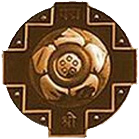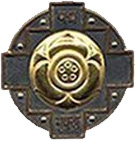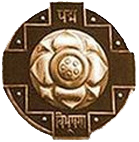New Delhi– The government has invited nominations for the Padma Awards for 2017, for which the last date is September 15.
The nominations can only be sent online and not through any other channel, a Union Home Ministry statement said.
 “It has been decided that from this year, the nominations/recommendations for the Padma Awards will be received online only on an electronic management system designed by the MHA. No other mode of nomination/recommendation will be accepted,” it said.
“It has been decided that from this year, the nominations/recommendations for the Padma Awards will be received online only on an electronic management system designed by the MHA. No other mode of nomination/recommendation will be accepted,” it said.
Nominations received after September 15 will not be considered.
Here is information about the Padma awards (source: Padma Awards website):
The Government of India instituted two civilian awards-Bharat Ratna & Padma Vibhushan in 1954. The latter had three classes namely Pahela Varg, Dusra Varg and Tisra Varg. These were subsequently renamed as Padma Vibhushan, Padma Bhushan and Padma Shri vide Presidential Notification issued on January 8, 1955.
 Bharat Ratna
Bharat Ratna
Bharat Ratna is the highest civilian award of the country. It is awarded in recognition of the exceptional service/performance of the highest order in any field of human endeavour. It is treated on a different footing from Padma Award. The recommendations for Bharat Ratna are made by the Prime Minister to the President of India. No formal recommendations for Bharat Ratna are necessary. The number of Bharat Ratna Awards is restricted to a maximum of three in a particular year. Government has conferred Bharat Ratna Award on 45 persons till date.
Padma Awards
Padma Awards, which were instituted in the year 1954, is announced every year on the occasion of Republic Day except for brief interruption(s) during the years 1978 and 1979 and 1993 to 1997.
 The award is given in three categories, namely, Padma Vibhushan, Padma Bhushan and Padma Shri.
The award is given in three categories, namely, Padma Vibhushan, Padma Bhushan and Padma Shri.
•Padma Vibhushan for exceptional and distinguished service;
• Padma Bhushan for distinguished service of a high order; and
• Padma Shri for distinguished service.
All persons without distinction of race, occupation, position or sex are eligible for these awards. However, Government servants including those working with PSUs, except doctors and scientists, are not eligible for these Awards.
The award seeks to recognize works of distinction and is given for distinguished and exceptional achievements/service in all fields of activities/disciplines. An illustrative list of the fields is as under:
1. Art (includes Music, Painting, Sculpture, Photography, Cinema, Theatre etc.)
2. Social work (includes social service, charitable service, contribution in community projects etc.)
3. Public Affairs (includes Law, Public Life, Politics etc.)
4. Science & Engineering (includes Space Engineering, Nuclear Science, Information Technology, Research & Development in Science & its allied subjects etc.)
5. Trade & Industry (includes Banking, Economic Activities, Management, Promotion of Tourism, Business etc.)
6. Medicine (includes medical research, distinction/specialization in Ayurveda, Homeopathy, Sidhha, Allopathy, Naturopathy etc.)
7. Literature & Education (includes Journalism, Teaching, Book composing, Literature, Poetry, Promotion of education, Promotion of literacy, Education Reforms etc.)
8. Civil Service (includes distinction/excellence in administration etc. by Government Servants)
9. Sports (includes popular Sports, Athletics, Adventure, Mountaineering, promotion of sports, Yoga etc.)
10. Others(fields not covered above and may include propagation of Indian Culture, protection of Human Rights, Wild Life protection/conservation etc.)
 The award is normally not conferred posthumously. However, in highly deserving cases, the Government could consider giving an award posthumously.
The award is normally not conferred posthumously. However, in highly deserving cases, the Government could consider giving an award posthumously.
A higher category of Padma award can be conferred on a person only where a period of at least five years has elapsed since conferment of the earlier Padma award. However, in highly deserving cases, a relaxation can be made by the Awards Committee.
The awards are presented by the President of India usually in the month of March/April every year where the awardees are presented a Sanad (certificate) signed by the President and a medallion.
The recipients are also given a small replica of the medallion, which they can wear during any ceremonial/State functions etc., if the awardees so desire. The names of the awardees are published in the Gazette of India on the day of the presentation ceremony.
The total number of awards to be given in a year (excluding posthumous awards and to NRI/foreigners/OCIs) should not be more than 120.
The award does not amount to a title and cannot be used as a suffix or prefix to the awardees’ name.







